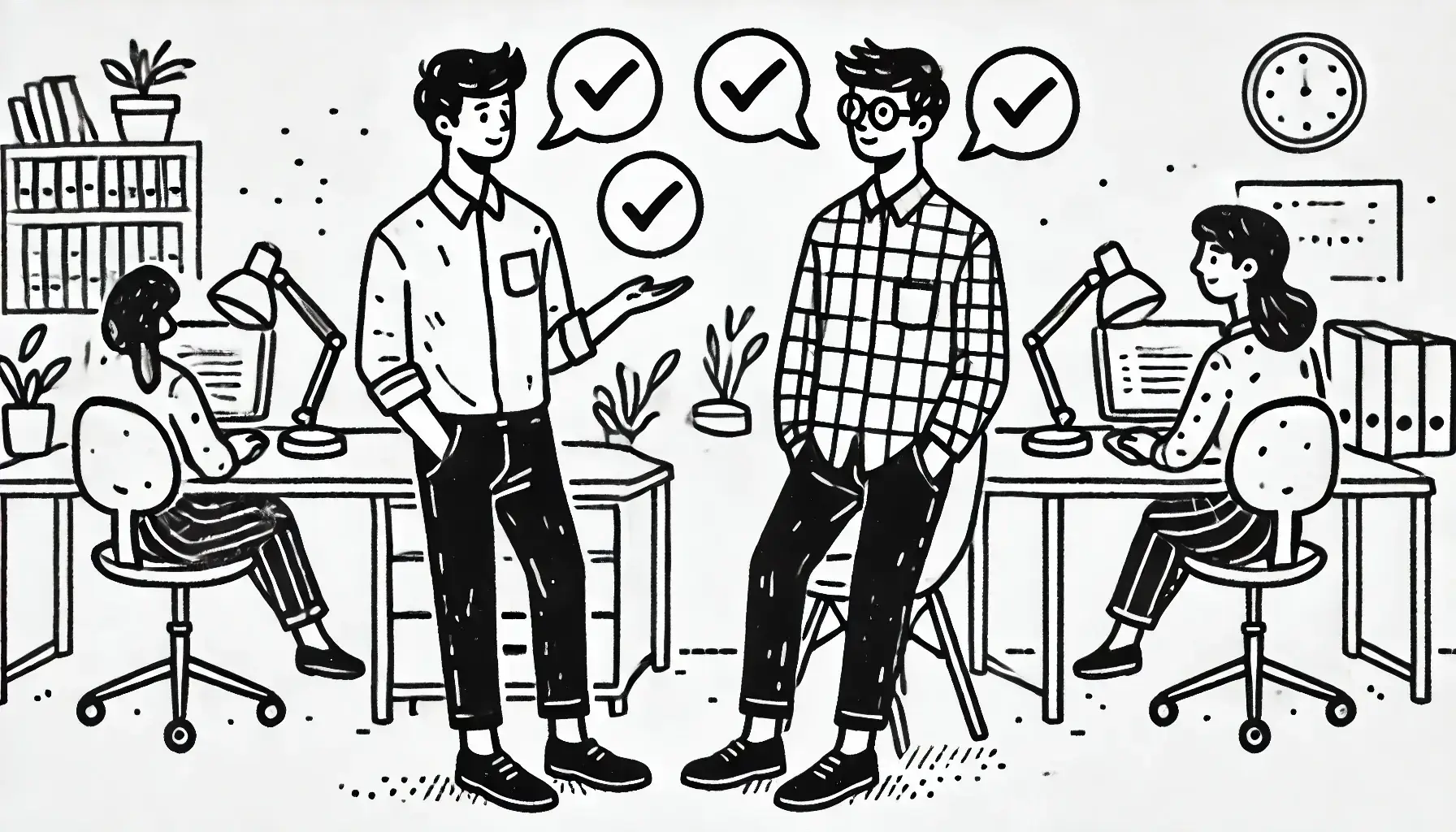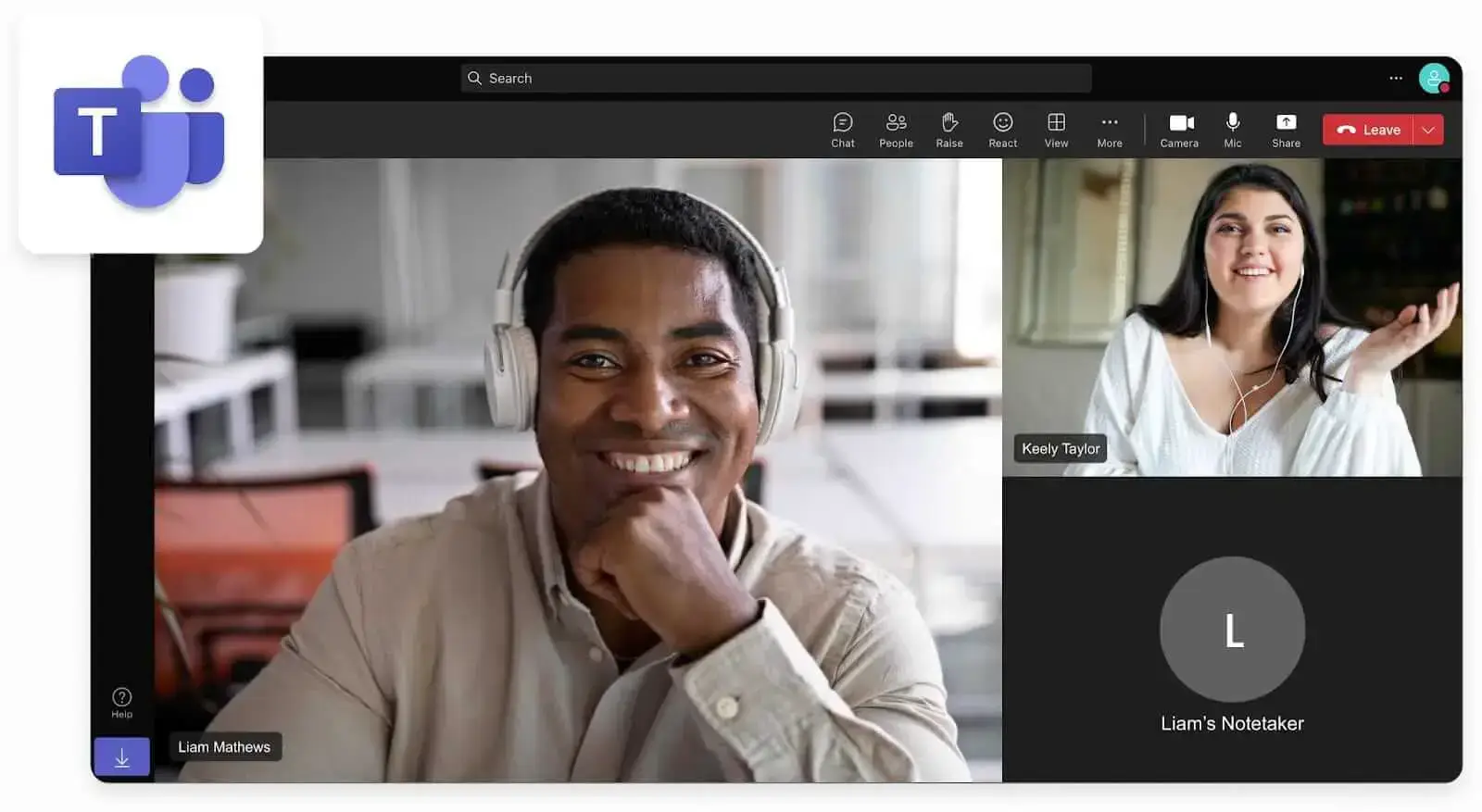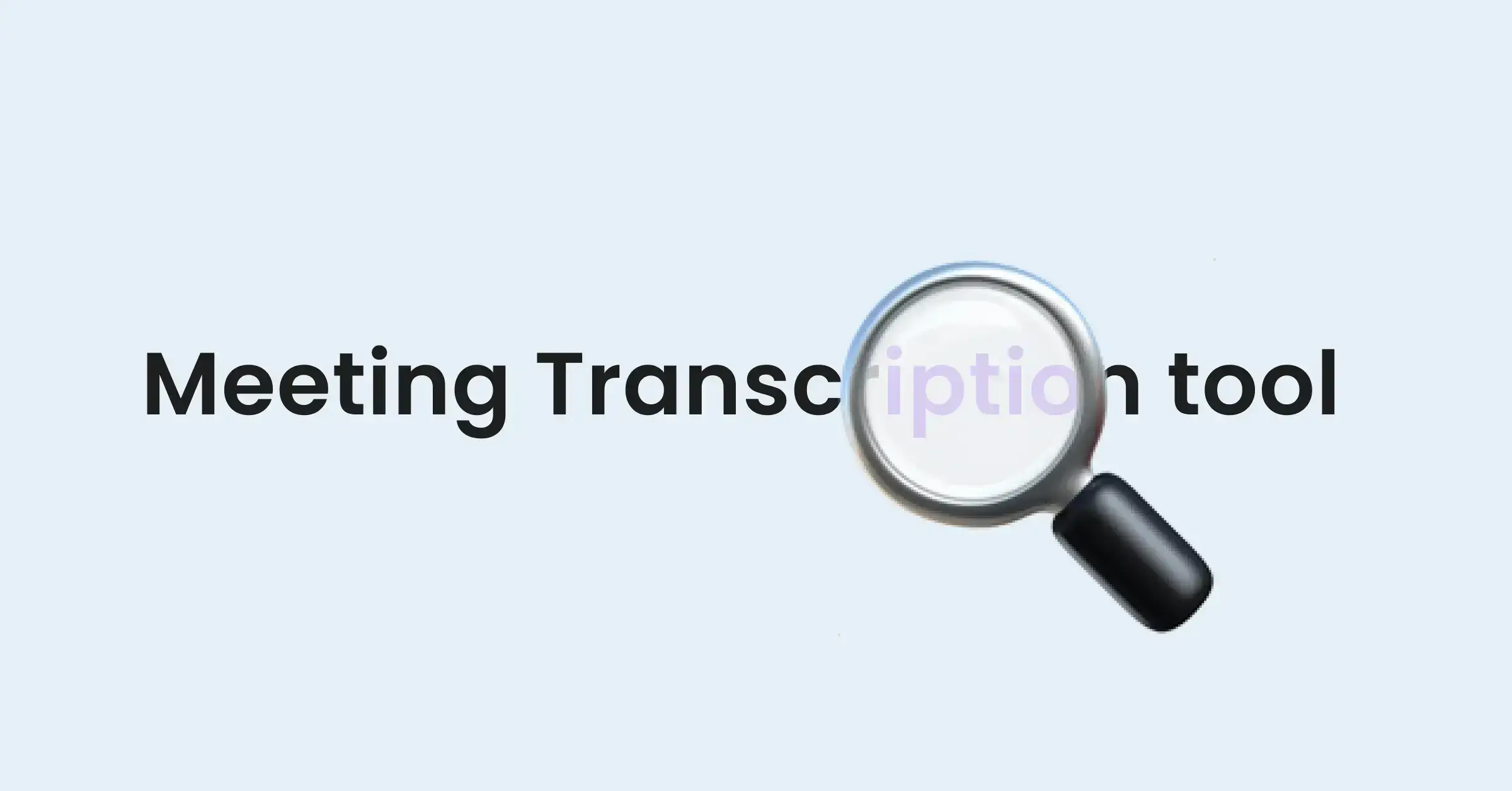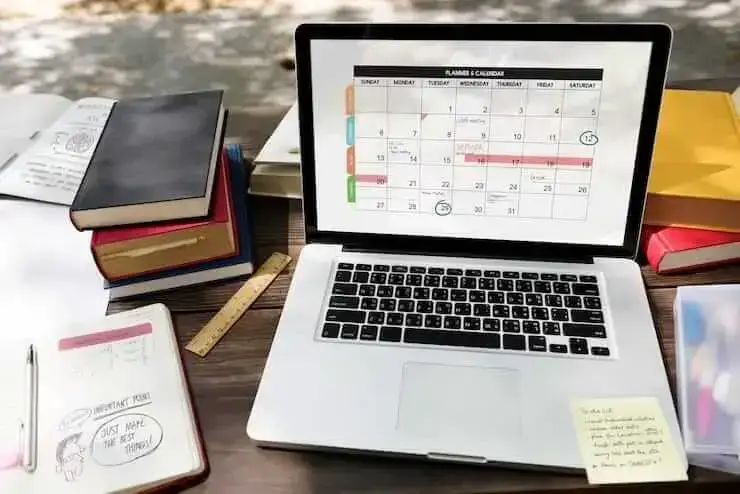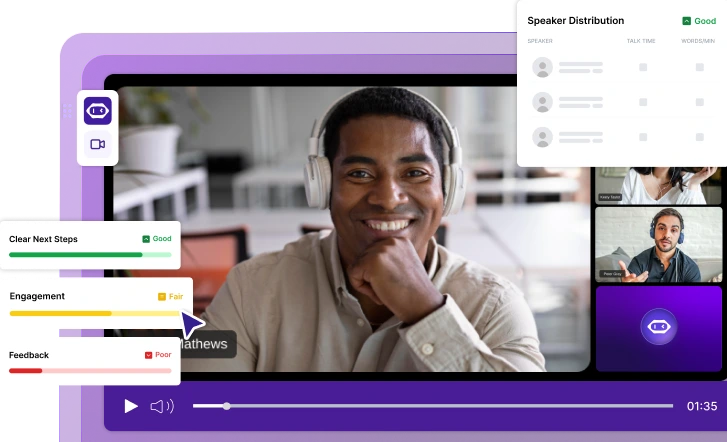How to Set Up a Zoom Meeting & Stellar Tips for Boosted Engagement
Master the Zoom setup with our easy step-by-step guide. From scheduling to hosting, learn how to connect & engage in the digital world.

✅ Free meeting recording & transcription
💬 Automated sharing of insights to other tools.

Virtual meetings have become indispensable, and Zoom is at the forefront with its ease of use and comprehensive features. But while setting up a Zoom meeting is simple, running one that's engaging and effective goes beyond just the basics.
This article will teach you how to set up a Zoom meeting effortlessly and share advanced tips to boost engagement. From interactive features to virtual meeting etiquette, we'll show you how to make your meetings not just productive, but also lively and engaging.
Whether you're refining your Zoom skills or starting fresh, this guide will help you host standout virtual meetings that keep everyone involved and interested. Let’s begin!
Zoom’s Best Features for Engaging Meetings
In the realm of virtual communication, Zoom has carved out a significant niche, offering a suite of features that not only facilitate smooth online meetings but also enhance engagement and collaboration among participants.
Here are Zoom’s best features for engaging meetings:
- Online meetings: The platform’s high-quality audio and video ensure clear communication, while screen sharing and meeting recording features add layers of interactivity and clarity. This creates an environment where ideas are easily shared and understood, even in low-bandwidth situations.
- Zoom Team Chat: Zoom's Team Chat extends its functionality beyond video calls, offering a space for continuous, real-time communication within teams. This integrated messaging tool supports file sharing and dedicated channels for specific projects, ensuring that the conversation flows seamlessly across all stages of collaboration.
- Zoom Whiteboard: For brainstorming and collaborative projects, the Zoom Whiteboard is invaluable. It's a digital canvas for real-time idea sharing, sketching, and annotating, perfect for visual communication. With the ability to save and share whiteboards, teams can maintain the continuity of their creative processes.
- Smart Gallery: The Smart Gallery feature uses AI to improve inclusivity in hybrid meetings by creating individual video feeds from a single camera in meeting rooms. This ensures all participants, whether remote or in-room, are visible and engaged, fostering a more natural and inclusive meeting environment.
- Zoom Calendar: With the Zoom Calendar integration, scheduling and joining meetings become effortless, directly from your preferred calendar app. This feature reduces the hassle of app-switching, helping you stay on top of your meetings without missing a beat.
- Meeting Scheduler: The platform offers detailed control over meeting setup, from scheduling recurring meetings to pre-assigning breakout rooms. This customization ensures meetings are well-organized, secure, and tailored to your team's needs, enhancing productivity and engagement.
- Integration with other apps: Zoom integrates with 3rd party tools like MeetGeek to expand its functionality beyond video conferencing through features like meeting recording, transcription, AI summarization, and analysis.
- Zoom Huddles: Zoom Huddles create a virtual space for casual, drop-in conversations, emulating the spontaneous interactions of an office setting. This feature is especially valuable for remote and hybrid teams, fostering a sense of community.
Prerequisites for Setting Up Zoom Meetings
Participating in a Zoom meeting doesn't necessarily require an account, but setting one up as a host is a different story.
To set up a Zoom meeting, ensure you meet the following prerequisites:
- Ensure you have a Zoom account set up.
- If you prefer desktops or laptops, ensure you have the Zoom Desktop Client in the 5.0.0 version or above, compatible with Windows, macOS, or Linux systems.
- If you prefer mobile devices, ensure you have the Zoom mobile app in the 5.0.0 version or above installed on your Android or iOS device.
- Compatibility is key, so ensure your device and operating system are supported by Zoom. This includes a wide range of platforms, from Windows and macOS to mobile ones like iOS and Android, and even Chrome OS.
- Adequate audio and video gear is crucial. Typically, built-in microphones and cameras suffice, but for enhanced quality, consider external devices.
NOTE: Remember, these prerequisites not only enable you to properly set up your virtual meeting but also significantly enhance your participation quality, making the experience more enjoyable and productive for everyone involved.
How to Create Zoom Meetings on Any Device
Whether planning in advance or setting up an instant Zoom meeting, the platform's flexible features allow you to stay connected with your team, clients, or friends effortlessly.
Keep reading to learn how to set up a Zoom meeting on any device!
A. How to Set Up a Meeting on the Zoom Web Portal
Here’s how to set up a meeting on the Zoom Web Portal:
- Access the Zoom Web Portal and sign in to your account. If you're new to the platform, you'll need to create a free account first.

- Once signed in, go to the 'Meetings' tab on the left side to access your meeting dashboard.

- Look for the 'Schedule a New Meeting' button in your dashboard and click it to start planning your meeting.

- You'll be prompted to fill in the details for your meeting:
- Name: Give your meeting a clear and concise title.
- Description (optional): Provide a brief overview of the meeting's agenda or purpose.
- When: Select the date and time for your meeting.
- Duration: Estimate how long you expect the meeting to last. Note that this doesn't limit your meeting time.
- Timezone: Ensure the correct timezone is selected, especially if participants are joining from different regions.
- Attendees: Invite participants to yourscheduled meeting by adding their emails to the dedicated field.
- Meeting ID: Choose whether you want to generate a random meeting ID or use your Personal Meeting ID (PMI).

- Scroll down to adjust meeting settings according to your needs. Options include enabling a waiting room, implementing a meeting passcode, and deciding on video/audio settings for hosts and participants.

- Explore advanced options for even more customization, like enabling participants to join before the host, muting participants upon entry, or automatically recording the meeting.

- After setting up your meeting, click 'Save'. You'll be taken to a confirmation page with the option to add the meeting to a calendar or copy the meeting invitation link.

B. How to Set Up a Meeting on Zoom Desktop App
Here’s how to set up a meeting on Zoom Desktop Client:
- Open the Zoom Desktop Client app on your desktop. You can easily download it from the Zoom website.
- Log into your Zoom account within the app. If you don't have an account, you'll need to create one first.
- On the main screen, you'll see options such as 'New Meeting', 'Join', 'Schedule', and 'Share Screen'. Click 'Schedule' to open the meeting scheduler window.
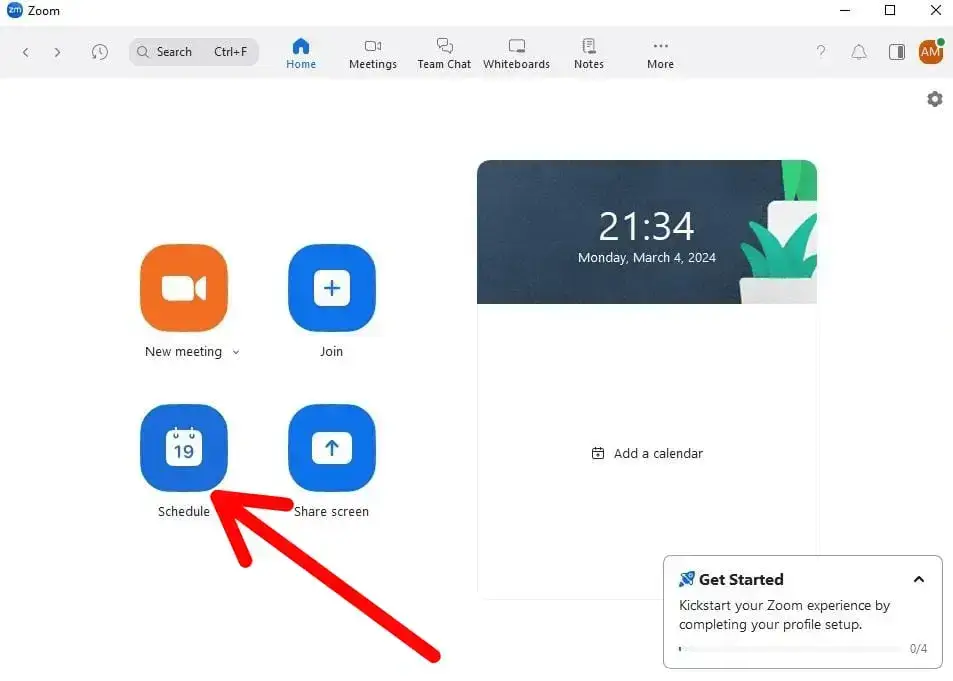
- In the scheduler window, input the necessary details for your meeting:
- Name: Give your meeting a clear title.
- Attendees: Invite participants to yourscheduled meeting by adding their emails to the dedicated field.
- Start: Input the date and time for the meeting.
- Duration: Choose how long you expect the meeting to last. This is for scheduling purposes and won't terminate the meeting automatically.
- Time zone: Ensure the correct time zone is selected, especially for teams across different regions.
- Recurring meeting: Check this box if the meeting will occur regularly and set the recurrence pattern.

- Decide whether to generate a unique Meeting ID automatically or use your Personal Meeting ID. If needed, you can also set a passcode for added security.

- Choose whether the host's and participants' video will be on or off by default when joining the meeting.

- You can add the meeting to your preferred calendar (Outlook, Google Calendar, etc.). The calendar event will contain the Zoom meeting details, as well as the meeting link.

- Click on 'Advanced Options' for more in-depth settings, such as blocking entry for certain users, enabling a waiting room, allowing participants to join before the host, muting participants upon entry, and automatically recording the meeting.

- After configuring your meeting, click 'Save'.
C. How to Set Up a Meeting on the Zoom App for Mobile
Here’s how to set up a meeting on the Zoom App for mobile:
- Launch the Zoom App on your mobile device. If you don’t have the app, you can find it in the App Store (for iOS devices) or Google Play Store (for Android devices) and install it.
- Tap on 'Sign In' and enter your Zoom account details. If you're new to Zoom, you can sign up directly within the app.
- From the main menu, you'll see options such as 'New Meeting', 'Join', 'Schedule', and 'Share Screen'. Tap on 'Schedule' to start setting up your new meeting.
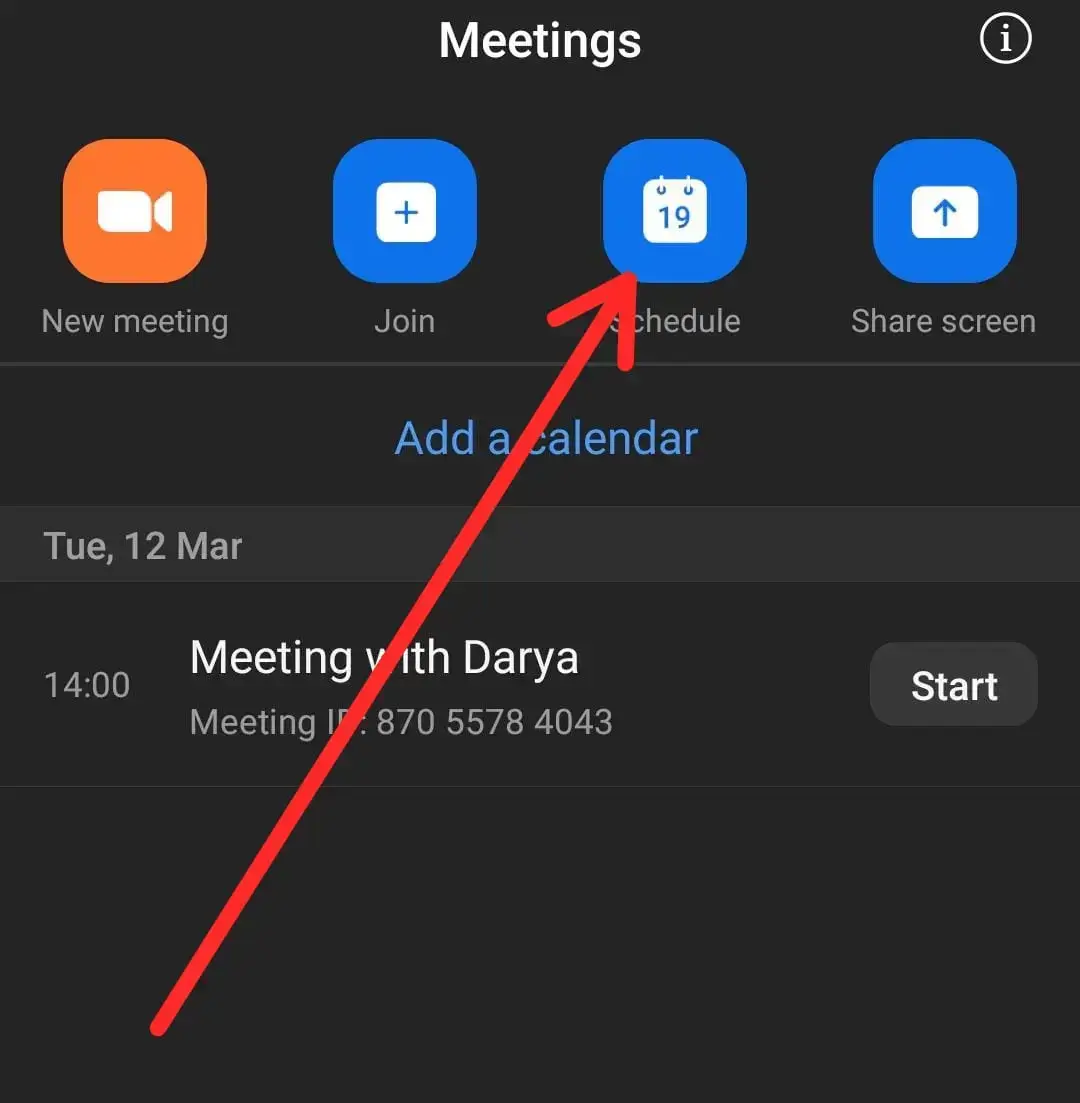
- On the scheduling screen, fill in the necessary information for your meeting:
- Name: Give your meeting a clear title.
- Start: Choose the date and time of the meeting.
- Duration: Choose how long you expect the meeting to last. This is for scheduling purposes and won't terminate the meeting automatically.
- Time zone: Ensure the correct time zone is selected, especially for teams across different regions.
- Recurring meeting: Check this box if the meeting will occur regularly and set the recurrence pattern.
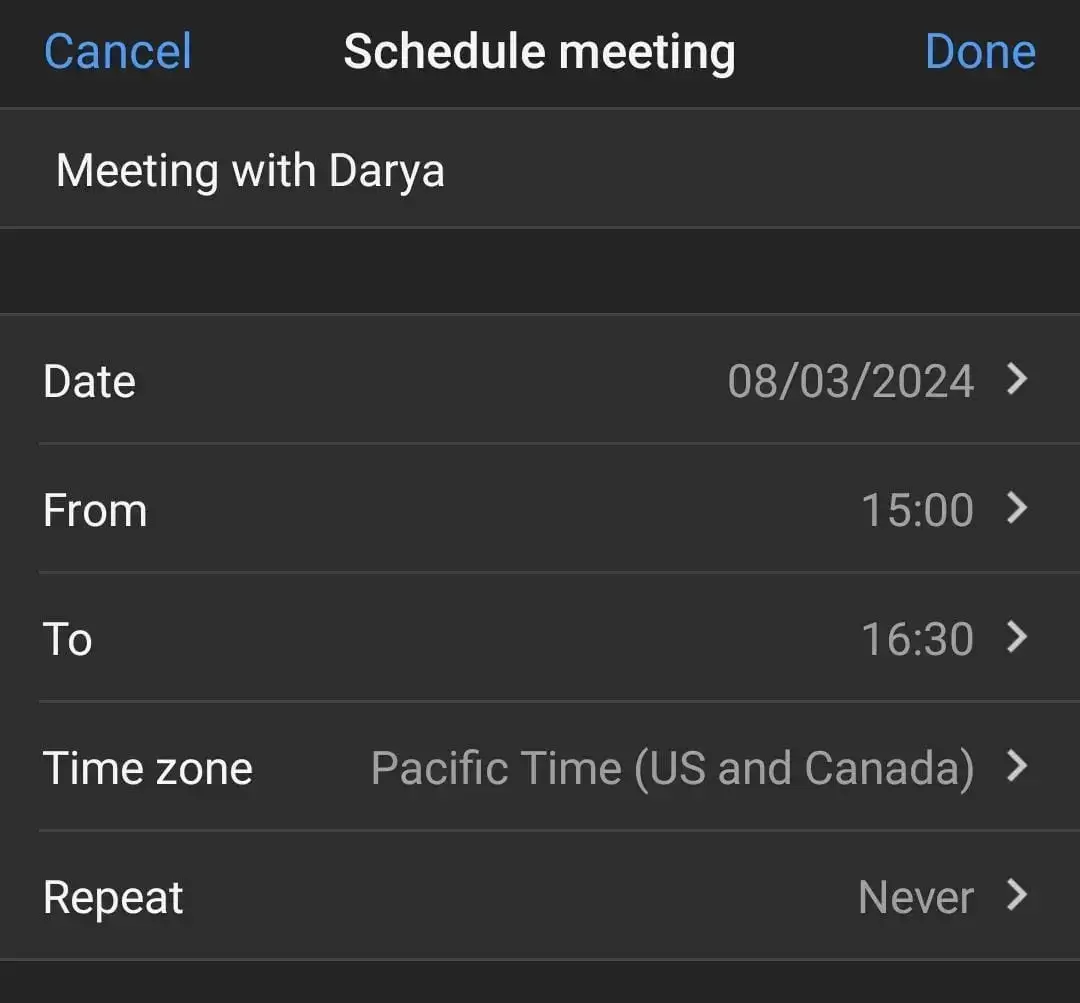
- Scroll through the options to customize your meeting settings:
- Meeting ID: Choose whether you want to generate a unique meeting ID or use your Personal Meeting ID.
- Passcode and enable waiting room: Add a passcode for security and a waiting room for additional control over participant entry.
- Video and audio: Choose whether the host's and participants' video will be on or off upon entry, and ensure audio options allow for both telephone and computer audio.

- At the bottom of the page, you will find a drop-down menu with additional settings you may want to enable, such as allowing participants to join before the host or automatically recording the meeting to the cloud.

- Once you've set your meeting preferences, tap 'Done' or 'Save' (depending on your device). The app will prompt you to add the meeting to your device's calendar, where you can share the event or further edit scheduled meeting information.

Stellar Tips for Engaging Zoom Meetings
Now that we got the setup part out of the way, let’s get into some additional tips to help you prepare and execute your scheduled Zoom meeting.
Here are some tips for engaging Zoom meetings:
- Prep your tech
- Familiarize yourself with host controls
- Implement the waiting room feature
- Engage participants with polls and reactions
- Encourage video use to increase engagement
- Use breakout rooms for smaller discussions
- Customize your meeting settings
- Provide clear instructions for participants
- Follow up after the meeting
1. Prep Your Tech
A robust internet connection, high-quality microphone, and HD camera are the pillars of a smooth Zoom experience.
PRO TIP: Always conduct tech checks before your scheduled meetings, testing your internet speed (aim for at least 10 Mbps for uploads and downloads), audio clarity, and video quality. Adjust lighting and camera angles to ensure you're visible, creating a professional and engaging visual presence.
2. Familiarize Yourself with Host Controls
Dive deep into Zoom's tutorial resources to understand how to manage participant permissions, control screen sharing, and navigate through advanced settings.
Being adept with these controls allows you to manage the flow of the meeting seamlessly, addressing any technical hiccups with ease.
3. Implement the Waiting Room Feature
Leverage the Waiting Room feature not just as a security buffer but as a curated welcome experience.
PRO TIP: Customize the waiting room with a message that sets the tone for the meeting, provides an agenda overview, or includes a fun fact or question to ponder. This personalized touch can build anticipation and make participants feel valued from the moment they join.
4. Engage Participants with Polls and Reactions
Interactivity is key to engagement. Plan to incorporate Zoom's polling feature at strategic points in your meeting to solicit feedback, make decisions, or simply energize the group.
Encourage the use of reactions (thumbs up, clapping) to foster a sense of community and active participation. These features, when used judiciously, can transform passive listening into active engagement.
5. Encourage Video Use to Increase Engagement
Facial expressions and body language are integral to communication. Politely encourage participants to keep their videos on, emphasizing the value of visual connection in fostering a collaborative atmosphere.
PRO TIP: Acknowledge that meeting fatigue is real and offer brief 'camera-off' breaks during longer meetings to maintain comfort and engagement.
6. Use Breakout Rooms for Smaller Discussions
Breakout rooms are Zoom's answer to side conversations and small group collaborations. Plan your agenda to include breakout room sessions, where participants can delve into specific topics in a more intimate setting.
Provide clear instructions and objectives for each breakout room, and consider rotating groups to maximize networking and collaboration opportunities.
7. Customize Your Meeting Settings
Zoom's customization options allow you to tailor the meeting environment to your specific needs. Explore settings such as virtual backgrounds for a uniform look, advanced audio for clearer sound, and accessibility features to ensure inclusivity.
These adjustments can significantly enhance the participant experience, making your virtual gatherings just as professional and engaging as in-person meetings.
8. Provide Clear Instructions for Participants
At the beginning of your meeting, offer a brief overview of Zoom's features that will be used (e.g., chat, raise hand, reactions) and how participants can engage effectively. This ensures all attendees, regardless of their familiarity with Zoom, can fully participate and contribute.
9. Follow Up After the Meeting
The conversation shouldn't end when the meeting does. Send a follow-up email containing all the key points, action items, and any relevant documents or recordings from the meeting.
This not only reinforces the content discussed but also keeps the momentum going, encouraging continued engagement and collaboration among participants.
How to Record a Zoom Meeting on Any Device
Recording Zoom meetings offers a plethora of advantages, enhancing the efficiency and effectiveness of virtual communication.
MeetGeek not only automatically records and transcribes your virtual gatherings but also ensures that every aspect of your meeting is handled with precision and ease. This allows you to focus on your work without drowning in administrative tasks.
Here are some of MeetGeek’s standout features:
- AI Summaries with sharing options: MeetGeek transforms the way you wrap up meetings by generating AI meeting notes that contain all the key points, decisions, and tasks discussed. Then, you can have these insights automatically shared with attendees or relevant stakeholders, ensuring no one misses out on important information.
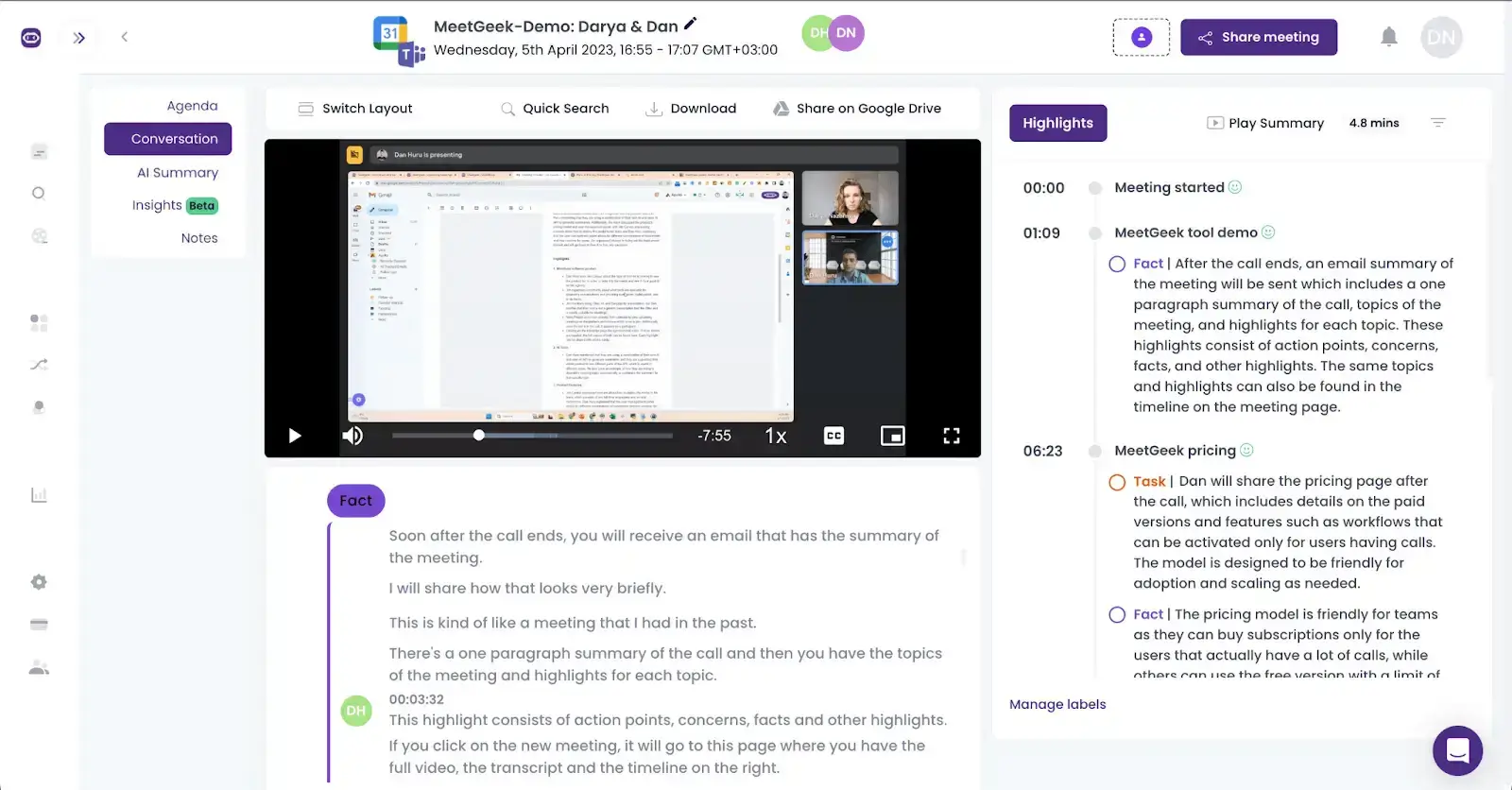
- Centralized meeting repository: Keep all your meetings organized in one place with MeetGeek. Whether you want to revisit a discussion, download it for later, or share it securely, everything is just a few clicks away, streamlining access for everyone involved.
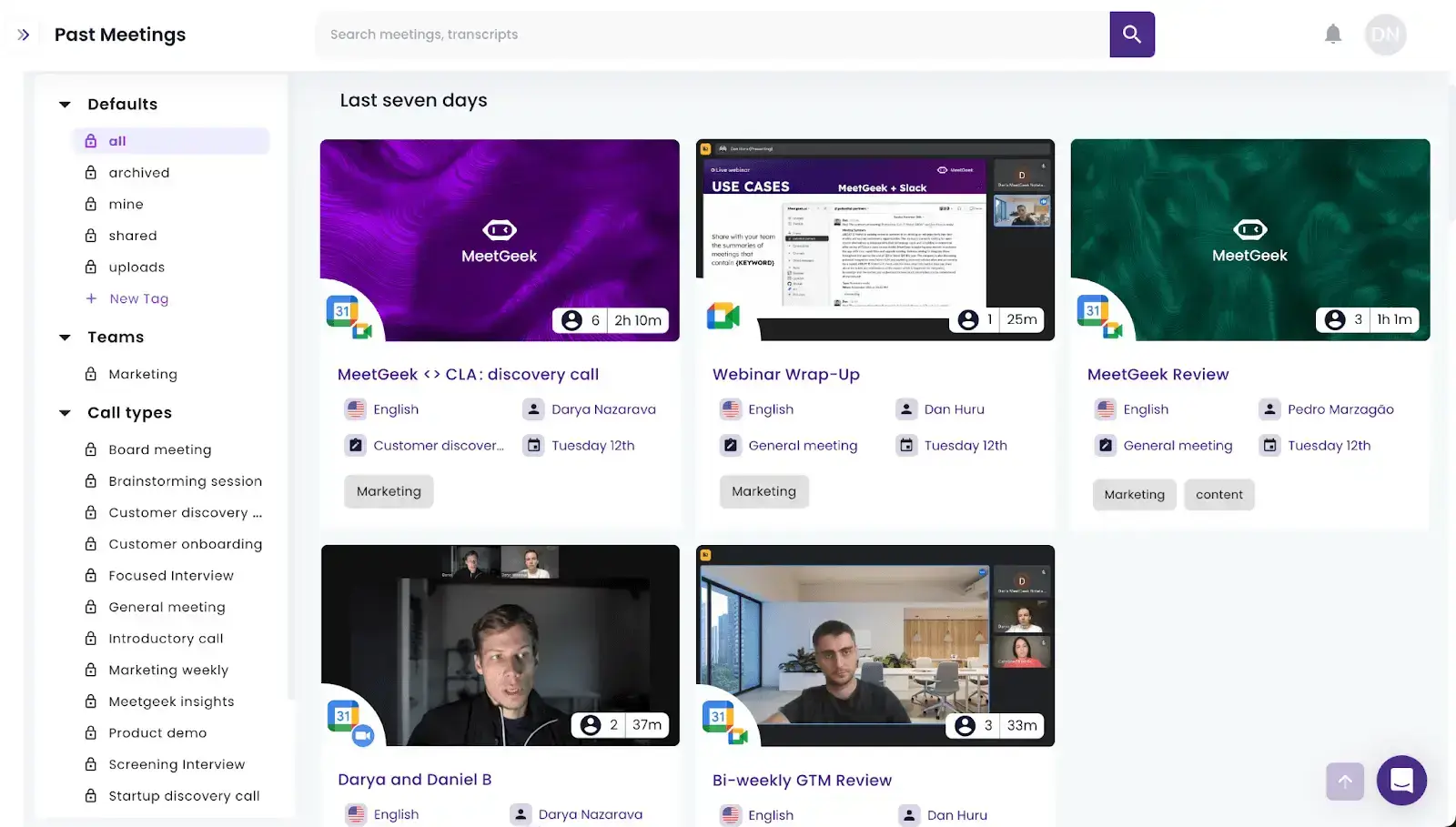
- Action item extraction: MeetGeek's Task Detection feature identifies and extracts all actionable items from your conversations, significantly cutting down your post-meeting workload.
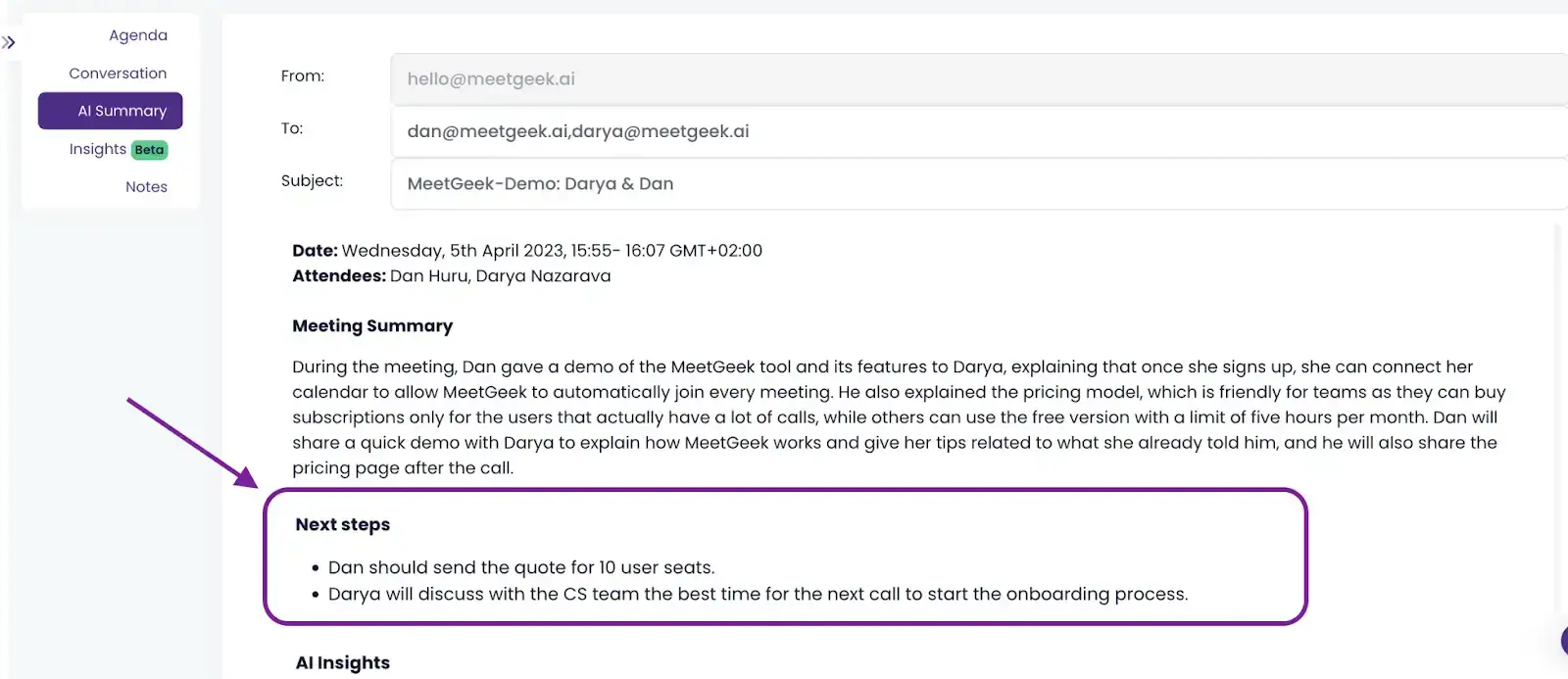
- Automated workflows: MeetGeek doesn't just stop at organizing tasks; it integrates them into your existing digital workspaces through its meeting automation features. This way, your workspaces are permanently updated with new tasks, keeping everyone on track and allowing you to address challenges promptly.
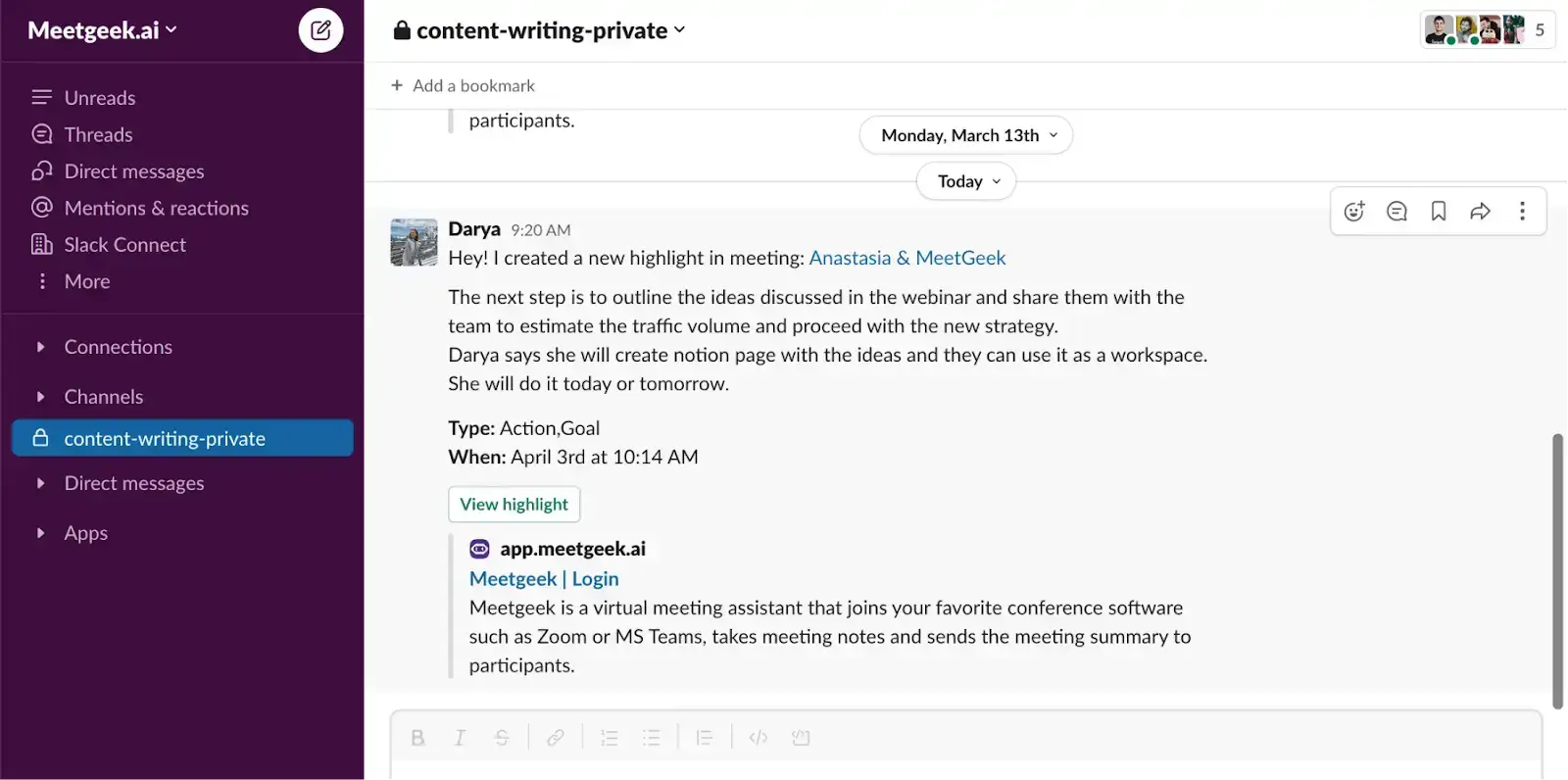
- Meeting analysis made easy: Not all meetings are equal, and MeetGeek gets that. It provides a unique performance score for each meeting based on your chosen KPIs, helping you gauge effectiveness.

Plus, with monthly and team-wide scores, you get a clear picture of overall performance, ensuring your meetings are always aligned with your objectives.
How to Troubleshoot Common Issues with Zoom Meetings
Sometimes during Zoom meetings, things may not go according to plan. Luckily, we’re here to successfully navigate these scenarios.
Here's how to troubleshoot common issues with Zoom meetings:
- Audio issues
- Make sure your microphone and speaker settings are correctly selected and configured in Zoom. Sometimes, the wrong device is selected by default.
- Use the audio test feature in Zoom to ensure your microphone and speakers/headphones are working properly.
- Double-check your device's volume settings. It's easy to overlook a muted microphone or a turned-down speaker volume.
- Video issues
- Similar to audio, ensure the correct camera is selected in Zoom's video settings. If you have multiple video sources, Zoom might not be using the one you intend.
- Verify that Zoom has permission to use your camera. This is a common issue, especially on new installations or first-time use.
- Close any applications that might be using your camera in the background, as they can interfere with Zoom's access to the camera.
- Connectivity challenges
- Poor or unstable internet connections are often the culprit. Switch to a wired connection or get closer to your Wi-Fi router, or try using a Wi-Fi extender.
- Sometimes, restarting your router can improve your connection stability.
- If possible, reduce the number of devices using your network during the meeting, or pause any downloads or streams.
- Meeting access difficulties
- Ensure you've entered the correct meeting ID and passcode. It's easy to mistype or mix up digits.
- Confirm with the host that the meeting is still scheduled and hasn't been canceled or rescheduled.
- If you're stuck in the waiting room, the host might not have noticed your arrival. A quick message to the host can resolve this.
- Echo or feedback in the call
- Headphones can significantly reduce echo and feedback, providing a clearer audio experience for everyone.
- Encourage all participants to mute their microphones when they're not talking to minimize background noise and feedback.
- Updating Zoom
- Regularly updating Zoom can resolve many potential issues. The latest version often contains fixes for common bugs and performance improvements.
NOTE: Most Zoom issues can be fixed with a few simple adjustments. However, you can always contact Zoom's support if you're facing more complex problems. They're there to help!
Frequently Asked Questions
1. Can You Schedule a Zoom Meeting without Being the Host?
To schedule a Zoom meeting on behalf of someone else, you need the meeting host to assign you scheduling privileges. The host can do this by going to their Zoom settings and adding your email under the 'Schedule Privilege' section.
Once you have these privileges, you can schedule Zoom meetings, and they will appear under the host's meetings list, with the host retaining full control during the session.
2. Can I Schedule a Zoom Meeting that Automatically Records the Session?
Yes, it is possible to set up a Zoom meeting to record automatically. When scheduling the meeting, in the 'Meeting Options' section, select 'Automatically record meeting' and choose if you want it saved on your local computer or in the cloud. This setting ensures the recording starts as soon as the meeting begins, without manual intervention.
However, to skip checking these options for every meeting on your calendar, get an AI meeting automation platform like MeetGeek to automatically record, transcribe, summarize, and analyze your meetings — whether you are the host or not!
3. Can I Schedule a Meeting without a Zoom Account?
Scheduling Zoom meetings is not possible without an account. However, participants invited to the meeting do not need a Zoom account to join; they simply need the invite link or ID and password provided by the host.
Make Every Zoom Meeting Count with MeetGeek!
From the technical setup on various devices to the nuanced strategies that foster interactive and inclusive environments, we've covered the spectrum to ensure your next Zoom meeting is not just successful, but truly memorable.
If you’re looking to take meeting efficiency and engagement to the next level, consider integrating MeetGeek into your workflow. With its AI-powered capabilities to automate meeting summaries, task detection, and actionable insights, MeetGeek can significantly streamline your post-meeting processes and enhance overall productivity.
Here's to more dynamic, engaging, and productive virtual gatherings ahead!
.avif)





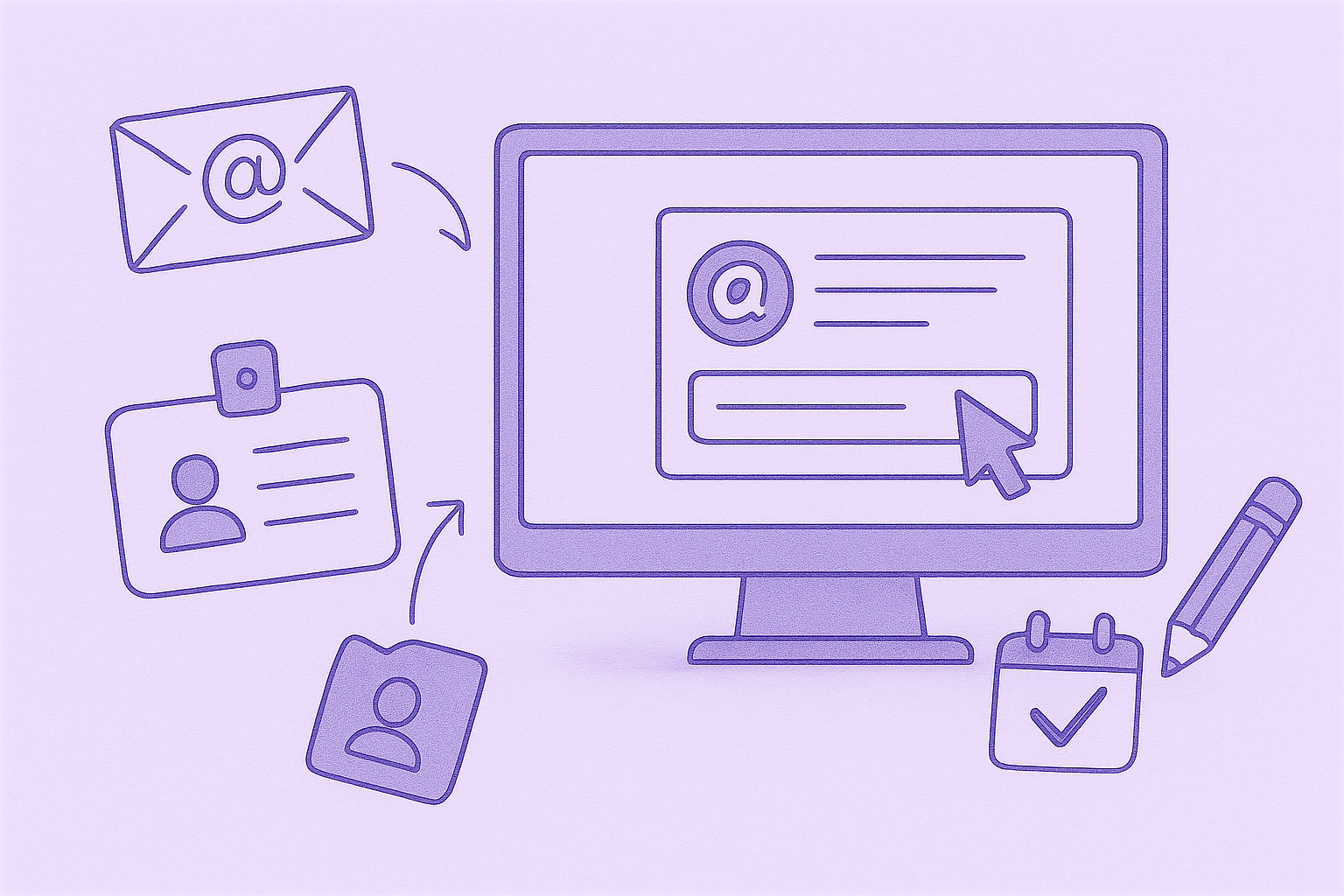
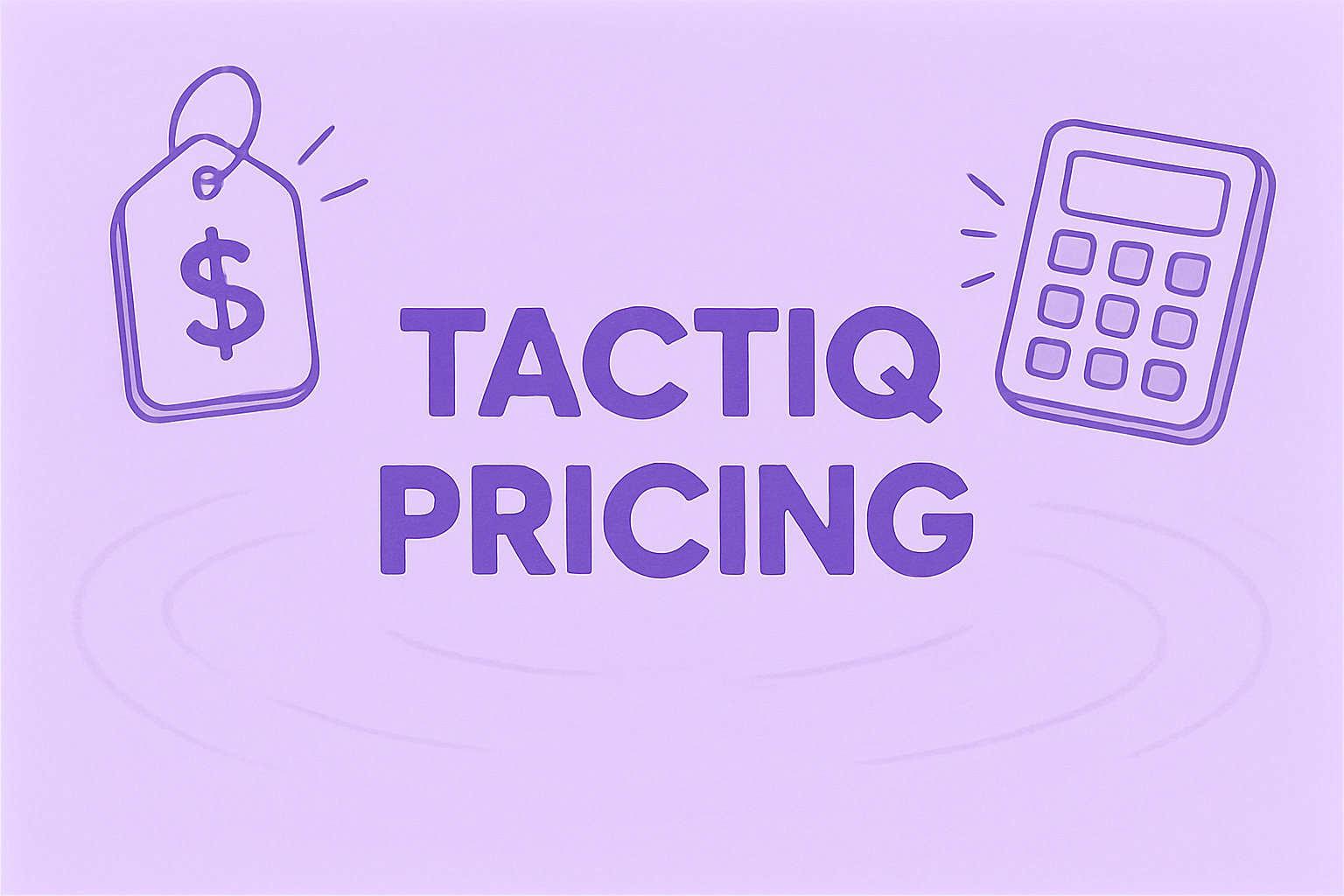
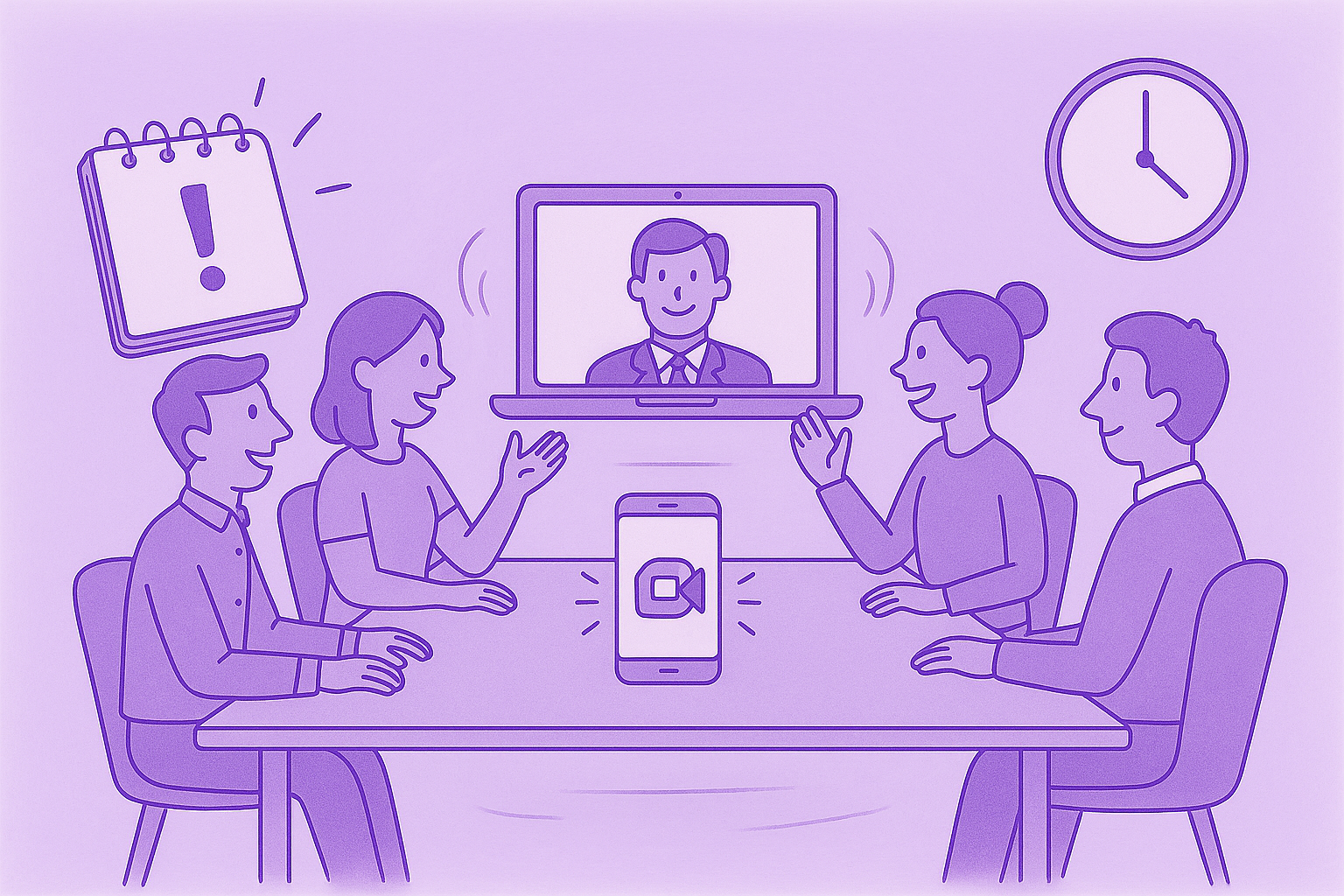
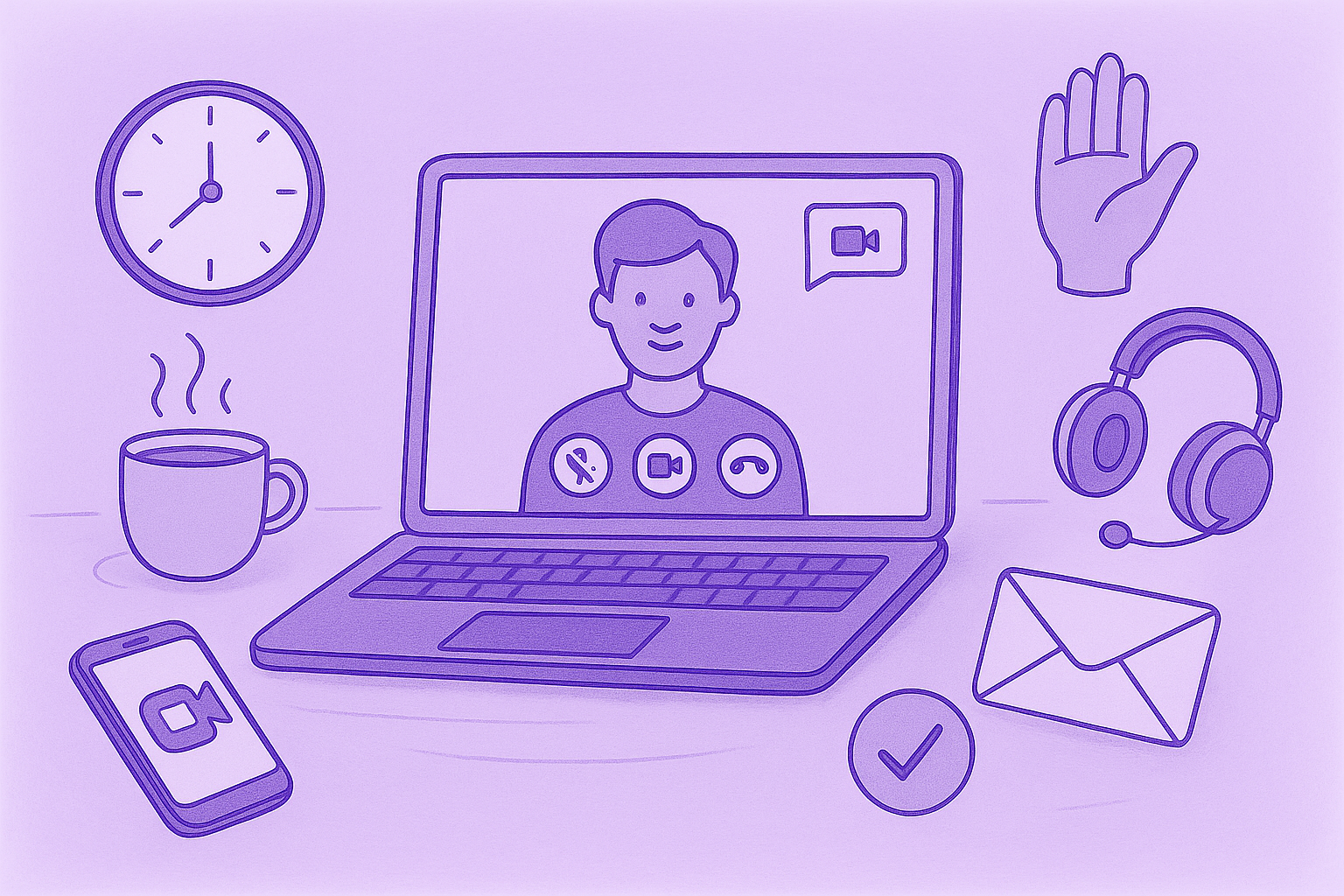
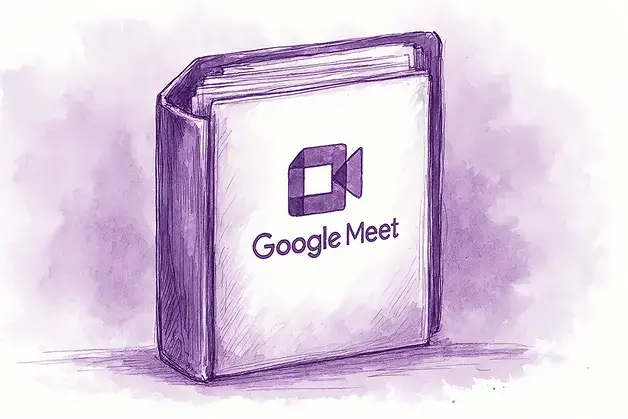


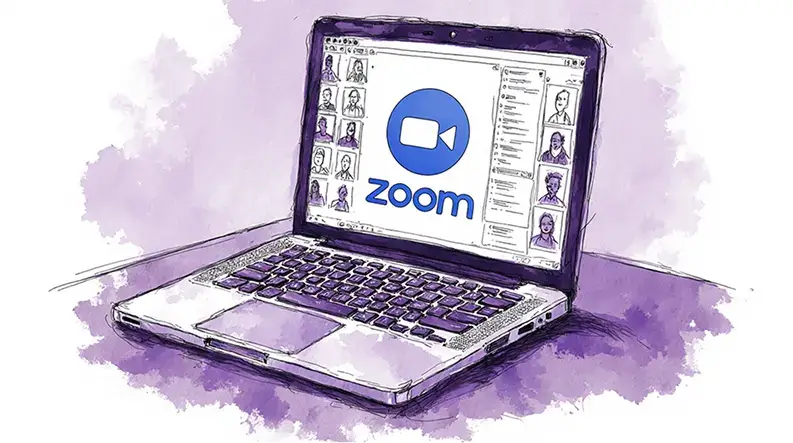











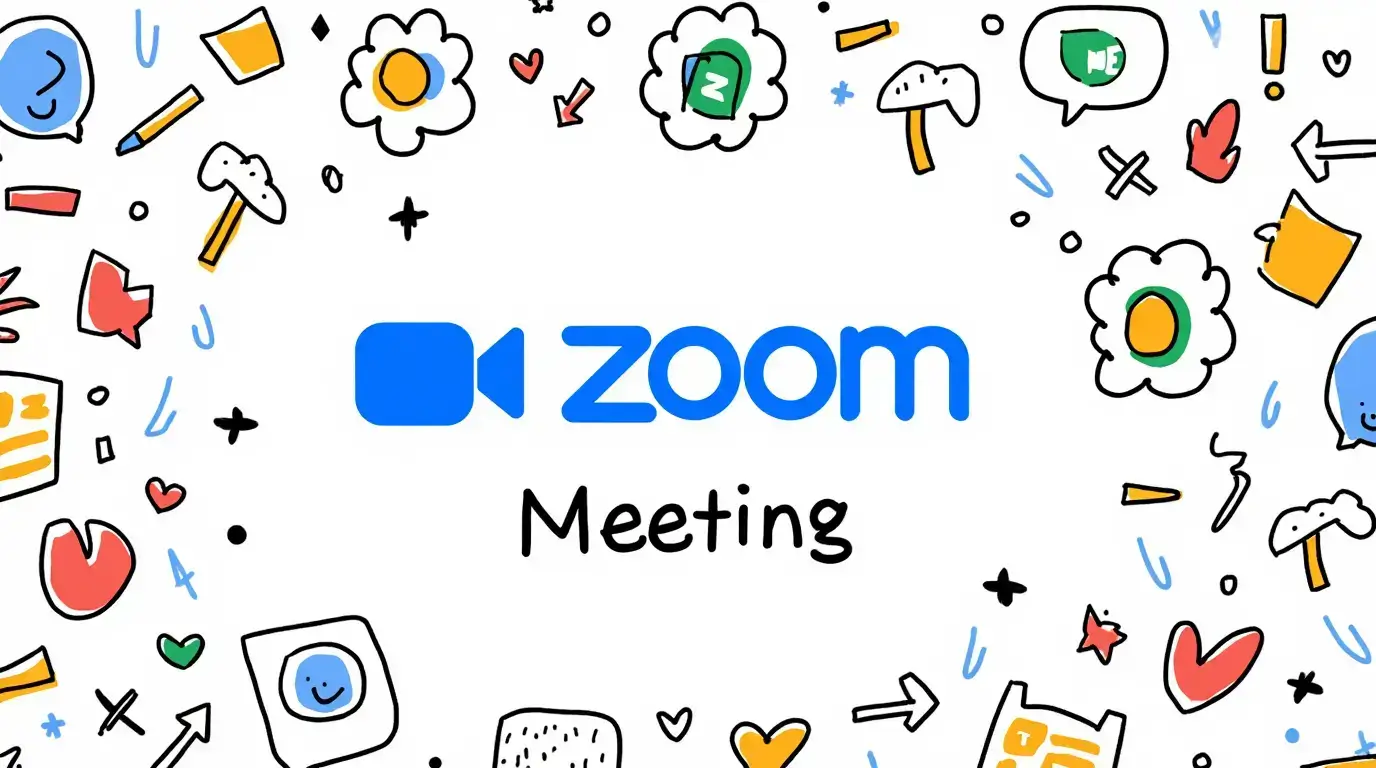




.png)
